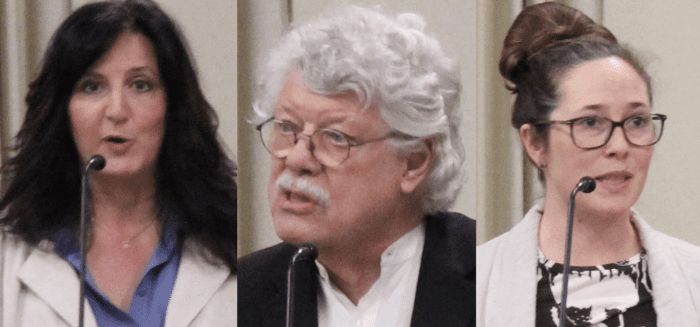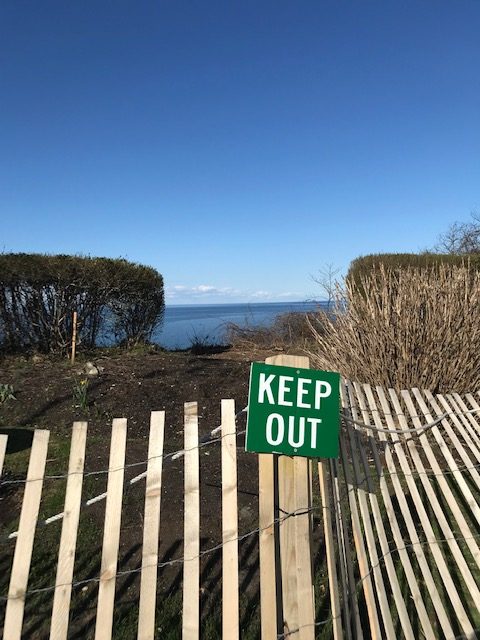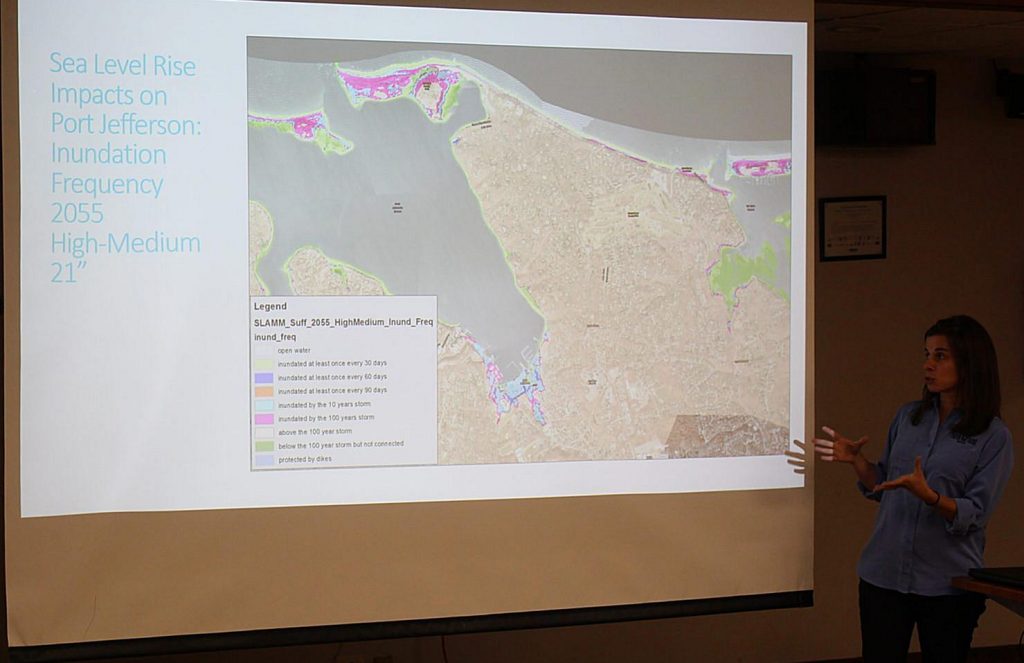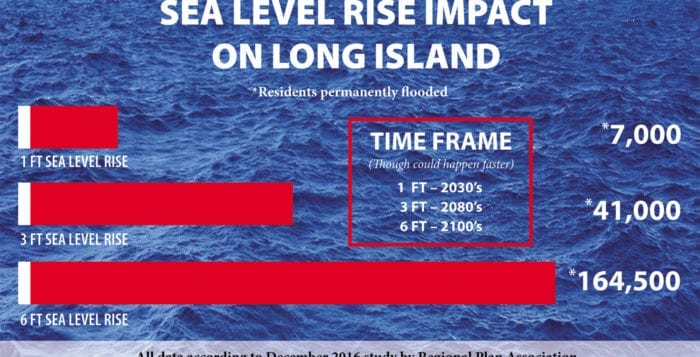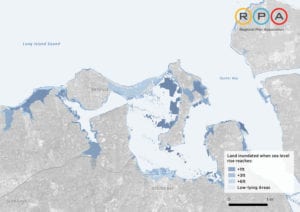Between rising sea levels, more frequent and intense storms and a changing climate, the Village of Port Jefferson is also addressing longstanding flooding concerns.
Public officials, architects and residents gathered at Village Hall on Wednesday, April 5, sharing updated findings of the ongoing village Climate Resilience Plan in a community workshop. With water targeting the village from all angles, data is being used to develop new intervention strategies.
“The Village of Port Jefferson, Drowned Meadow if you will [the village’s original name], has had unending issues with flooding as a result of topography, tides, runoff, rains, storms, a shallow water table and many other issues,” said Deputy Mayor Kathianne Snaden. “I believe tonight’s workshop will be extremely helpful in moving Port Jefferson toward the ability to implement a responsible and solid resiliency plan.”
Trustee Rebecca Kassay, the village’s sustainability commissioner, updated the public on the status of the Project Advisory Committee. Composed of residents, contractors, Conservation Advisory Council members and Amani Hosein, legislative aide to Town of Brookhaven Councilmember Jonathan Kornreich (D-Stony Brook), the PAC is pursuing the Climate Resilience Plan for the village with a focus on flooding.
The study is made possible by an $82,500 grant from the New York State Department of State to fund the creation of the Port Jeff plan. Michael Schwarting is a partner of the local Campani and Schwarting Architects, one of the firms hired to carry out various tasks associated with the grant. During the meeting, he updated the public on the study’s findings.
Flooding: an Achilles’ heel
Schwarting analyzed Port Jeff’s long history of flooding using historical aerial photographs and maps. He identified various hidden water bodies, such as Crystal Lake near the fire station and other creeks and streams, flowing beneath the existing built environment in Lower Port.
“The maps tell us a good deal about the conditions, and what we know is that it’s all still there,” he said. “That water is underground, and it doesn’t go away.”
Schwarting said three factors work to exacerbate flooding conditions: rising tides, waters below the surface and low-lying topography. “Those three things interact with one another to cause the problems that we’ve been having in the past, are still having and will have in a worse way, according to predictions,” the architect said.
The village is simultaneously afflicted by water from above, with projections for more frequent and intense precipitation events due to climate change. “The prediction is that the storms are going to increase,” Schwarting said, adding that as global sea levels rise, Port Jeff Harbor is projected to begin spilling over into much of the downtown business district.
Potential solutions
Despite the challenges ahead, Schwarting maintained that there are some natural remedies to help counteract these threats.
Storm drainage systems and rain gardens, for example, are already in place, collecting and channeling some of the stormwater load into the ground. Bioswales, bioretention planters and permeable pavement systems offer other modes of stormwater discharge and filtration, assigning it a reuse function as well.
The architect also proposed transitioning hardscape surfaces along the harbor, such as the Town of Brookhaven parking lot, as green space, which could add scenic value while acting as a floodwater sponge.
The next stages of the study will involve collecting more resident feedback and defining projects worth public consideration. Schwarting said a similar meeting would take place as those phases progress.
“We will start to move toward solving the problem now that we have spent quite a bit of time understanding the problem,” Schwarting said.
Kassay acknowledged the complexities of the flooding question, referring to these initial findings as “a little overwhelming.” Despite this, she maintained that planning and intervention remain the proper path forward.
“The only thing worse than digging into this problem is to ignore it because it’s happening, whether or not we do something,” she said. “We really need to come together to prioritize, make these decisions and support this work so that it is guided toward the result that you wish to see as a community.”

To view the full presentation and the Q&A portion of the meeting, see video above. To respond to the Port Jefferson Village Climate Resilience Survey, scan the QR code.

